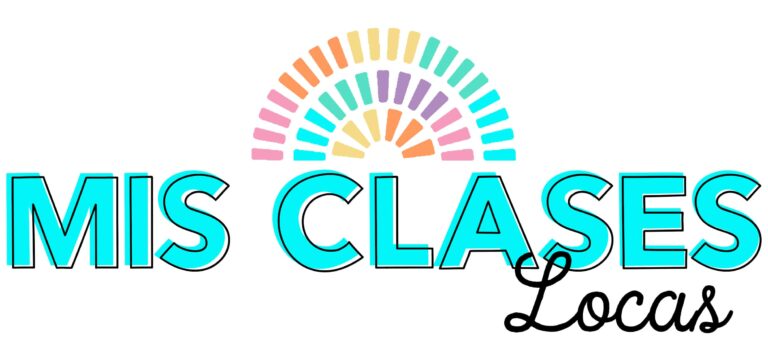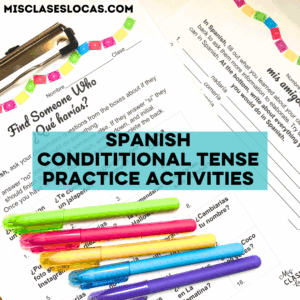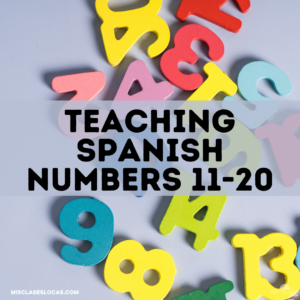Author – Allison Wienhold
Originally posted on April 15, 2019. Most recently updated January 14, 2025.
Inside: Reflections on taking the AAPPL test in Spanish class to get the seal of biliteracy. AAPPL test practice for the AAPPL Spanish test. AAPPL test Spanish practice.

What is the AAPPL test?
The ACTFL AAPPL test is an assessment of language learning across three modes of communication. AAPPL stands for Assessment of Performance toward Proficiency in Languages. The AAPPL test can be used as a standardized World Language test to earn the Seal of Biliteracy.
AAPPL test vs. STAMP Language Proficiency Test. Most teachers I know either use the AAPPL or STAMP tests to assess languages for the Seal of Biliteracy. I have never used the STAMP test from Avant Assessment, so this post will focus on AAPPL.
Why the AAPPL test?
When this post was first written, it was the first year that Iowa students had a chance to earn the state seal of biliteracy. As a member of the executive board, I was part of the recent excitement of this finally being passed last fall.
This meant for all of us, year one would be a learning year to try things out. Then hopefully help our students achieve the seal of biliteracy in the future.
Learning for me also included choosing and administering a standardized test in Spanish for the first time. Thanks to a great workshop from Laura Sexton at #IWLA18, I decided that I would try the AAPPL.
My 1st Spanish AAPPL tTest
My first year we let the AAPPL test be a voluntary option for students in Spanish III and IV. I had eight students take Form A (two Spanish IV and six Spanish III).
I was also lucky that my supportive administrator found some funding to cover it that year for the small number of students interested. It was $20 per student for all four parts.
*Update now in 2025 LTI is more shady about AAPPL test pricing. It is not posted and you have to request a quote. They charge you more if you only need a small number of tests. LTI discriminates towards smaller schools. For this reason many Iowa schools have moved to STAMP testing now.
How to get AAPPL Tests funded?
There are many ways to fun AAPPL test. First on all just ask to see if there is money. I know some school gets talented and gifted funds.
Another option is to do fundraisers. Or have students pay if they want to take it. It is a much more affordable option than the AP alternative.
How to prepare for the AAPPL Test?
Just like many conference experiences, I left Laura’s workshop excited about the possibility of the AAPPL. But, then did not do anything for months due to sheer overwhelm and not knowing where to start.
Luckily I happen to be in a small school-organized regional PD with some pretty awesome small town Spanish teachers, including Emily Huff.
Emily took action, was also at Laura’s workshop, and started creating and sharing AAPPL prep materials and using AAPPL Aligned Rubrics. I am really glad that I finally started doing some AAPPL prep in III & IV a few weeks before the test.
But, now I plan to drip AAPPL Spanish practice in all year in the future. So note to me next year, do not wait until a couple of weeks before doing anything to get ready.
What are the AAPPL topics? AAPPL Test Spanish practice
One way to do AAPPL test Spanish practice, is to make sure stduents have been exposed to the possible topics.
The AAPPL topics might change from year to year. You can see the most up to date AAPPL topics here. Below are the current topics that they might pick from depending on the form and age range. This list is for AAPPL Spanish practice test forms A & B.
- Arts & Literature
- Community Life
- Culture & Traditions
- Current Events & Social Issues
- Daily Life
- Economy & Business
- Education
- Entertainment
- Food
- Healthy Living
- History & Civics
- Hobbies, Leisure & Free Time
- Home & Places of Interest
- People
- Pets & Animals
- Professions, Careers & Work
- Science & Environment
- Technology & Innovation
- Travel & Vacation
- Who am I?
AAPPL Spanish Test Practice Prep Unit
My 1st time doing the AAPPL I sent Emily a panicked email a couple of weeks before AAPPL. This was after my student teacher left, and I asked her what she was doing to prepare.
I decided to follow her lead and push my next novels back. Instead we did a couple of weeks of an “AAPPL Spanish test Practice unit” in upper levels. This was to practice tasks and skills needed on the test.
No, not all students in these classes took the test. But, everything we did was worthy of communicative skills for any language class.
In the future I think I will have an AAPPL bite day once per week all year. This could rotate each week which skill we work on. Plus maybe a couple of weeks before helping students succeed.
I am not at all about teaching to the test or just doing AAPPL test Spanish practice. But, using similar style assessments year-round would help students be comfortable.
Here was our typical weekly plan for a few weeks of AAPPL test Spanish practice. We used themes that would be on the test listed above, all taken from what Emily was doing.
AAPPL Test Spanish Practice Unit to Prepare for Success
Monday – Interpretive Reading & Culture – AAPPL test Spanish practice
We used Laura’s AAPPL bite Google Slide templates. Students had the chance to read authentic readings and manipulate things around on the slides. It is a similar fashion to the computer AAPPL reading test.
I posted these as an assignment with “create a copy for each student” on Google Classroom. This way I was able to quickly spot-check how students were doing and provide feedback.
I normally do not do much on the Chromebooks due to translating. But, inserting pictures of text instead of typing directly on the slides, helped the translating a bit.
Also, make sure to have students take the Interpretive Reading AAPPL practice test.
Tuesday – Presentational Writing
We did Progressive Question and Answer and 20-minute writing prompts. These were both from Emily’s AAPPL prep materials.
These were similar style prompts to the AAPPL Spanish practice test. It helped students to write multiple, complete little essays in a shorter amount of time.
It is just like the Spanish AAPPL test, which had six separate writing prompts. The Presentational Writing was the part of the actual AAPPL test that by far took students the longest.
It took some students three hours to complete the 6 writing prompts. But, it is basically 6 essays. So, 30 minutes per essay is not out of line.
If you need AAPPL Practice Test Writing Practice read more >> Practice Writing in Spanish Class
Wednesday – Interpersonal Speaking – Café y Conversación
To get more speaking practice, besides using aappl prep19 flipgrid (RIP FLIP). Each week we had versions of Café y Conversación. Students could bring a mug and I provided hot water for powdered cappuccino or hot chocolate to try and put students at ease chatting.
I split up the listed AAPPL speaking topics by week and we did it a little differently each time. Each week I did give students some time to prepare questions on a note card first while getting drinks. Here are the variations we tried:
– Timed conversations – Posters with topics (school, home, all about me, future careers) were placed around the room in chatting areas. Students rotated around to all topics and talked about each topic.
– Rotating conversations – When I had two university students in my room, we each had a topic of discussion (community events, health, food) and students moved to each station after a 10 minute timer.
– Floating conversations – Posters with topics (TV, movies, art) were placed around the room in chat areas. Students floated around to all topics and talked about each topic with those with them there at the moment.
Read more Speaking Activities for Spanish Class
Thursday – stations – jueves de juegos
Depending on the week, Thursday was our catch-up day which often involved stations and games. This was the day students enjoyed the most. (In the future I would include a listening activity more in the AAPPL style as well). Depending on the week students had some of the below options, and were supposed to move to something else after a 15-minute timer:
- Use these Best Free Apps & Websites for Spanish Learning
- Duolingo
- Verba
- What do you Meme in Spanish
- Piensa rápido
- Conversation – draw a question
- ¿Cuál Preferirías? cards
- Demo tests – AAPPL Spanish practice test, AAPPL practice test, AAPPL test Spanish practice
Friday – Authentic TV Show Practice
I used our regular El Internado Fridays as our listening practice.
*Update now in 2025 I would use the show Tierra Incógnita instead. You can get free character slides below to introduce the show + I have Tierra Incógnita Season 1 Spanish class guide.
In the future I would also do more Interpretive Listening in the style of the AAPPL. AAPPL test Spanish practice tasks from the content list such as daily schedules and routines, about people, leisure activities, clubs, careers, community events, music, travel, science etc.
In the future, I want to do more of the listening AAPPL bites like AAPPL practice test. Especially with a variety of native speakers with different accents, as students said the variety of accents confused them.
Before Testing – AAPPL Student & Teacher Familiarization
I sent this to the students.
- » Watch the video on the ABOUT page.
- » Review the Tasks & Topics page so you know what tasks and topics will be on the test.
- » Set goals/strategies using the Score Descriptions and Sample Score Report on the Scores page.
- » Check out the tips videos on the Tips page.
- » Take the Practice Test on the Demo page.
- » Learn everything you ever wanted to know about AAPPL, and more on the FAQs page.
AAPPL Testing Logistics Year 1
I know each school does this differently. Remember, this was when I was a #deptof1.
I set up an account and ordered the tests for our school. I entered all of the student info in a spreadsheet. Then they contact the school to pay after the tests are complete.
We scheduled a sub for me one morning to proctor in a computer lab (but students needed their Chrome books with a microphone to do the speaking). In my online account, I then printed out the testing codes for each student to give them on the day of the test and collect after testing.
It says to plan for 30 minutes per test, and that was right on with reading, listening, and speaking for most students. The writing, however, by far took the longest. You need at least an hour each. If given the time some students might need two-three hours for writing alone.
My students all brought headphones and went through the tests at their own pace. They started with listening or reading, then writing, and finally speaking.
With our small number of students and them being at their own pace, they were able to spread out for speaking, with some choosing to use attached closets, entryways, and offices to speak alone. Overall, it went faster than I thought, with some finishing in less than two hours total, and the longest taking about three hours total.
I know some teachers test in class if the whole class is taking it, and it would be kind of nice to have that break, knowing writing might take over a class period.
AAPPL Testing Logistics Year 2
That year I taught combined Spanish 3/Spanish 4 in a Multilevel Spanish Class. We were on 100 minute Block Schedules.
As a group we all did AAPPL test Spanish practice unit together. More than half of the students in that class opted to take the test. So, we took the AAPPL test in class over a week during our block classes.
Students were able to split up the sections over multiple days as to not be overwhelmed.
Most did reading & listening in the same 100 minute block. Some also did speaking the same day. But, others waited until another class to be more fresh.
The writing for sure was the lone activity for one block. Multiple students stayed into my prep that followed to be able to finish the writing.
Those who opted to not take the test did an individual Señor Wooly unit slides & nuggets on their own in the school library instead.
I would 100% suggest splitting the test into multiple days if possible.
AAPPL Test Reflection
I knew going in that this was our first trial run. My students were very nervous and many wanted to back out since they were afraid of not doing well. The reading and listening scores show up in your account soon after students complete them. But the writing and speaking can take a couple of weeks.
At this point, the scores I do have so far are kind of all over the place and not really what I was expecting. This group for the most part is pretty even and in-class assessments typically score in the low intermediate range (but I have not had formal OPI training).
Most students have at least one lower score, and some random I3s and I4s, and in Iowa at least I2 is required in all four sections for the seal of biliteracy. This means that hopefully my Spanish III students will continue, to take Spanish IV, and bump up in their area needing improvement, but my current Spanish IV will not get that chance.
Form A vs. Form B AAPPL Tests
The score that confused me the most was reading. This is the skill that I felt these students were strongest in as they have each read 10+ acquisition and culture-based novels in Spanish. At the same time, I wonder if the Form A novice reading topics such as family, health, and life were too far removed from the more intermediate reading topics we have done more recently.
I wish I could have them take Form B to see how they do on those instead. Almost every student got I1, with one higher and one lower. Also, I now realize that to do well on standardized tests like this more practice with interpreting authentic resources would be helpful.
*Update – In later years we used Form B & it was much more accurate! Use form B with upper-level students!
It is hard for a teacher to see test scores and not take them personally. I am going to try to use them to show where I can learn and grow as an educator and how I can best possibly prepare my students for the future. I appreciate that I have admin and students who are willing to try new things with me, knowing there is still room to learn and grow.

Have you used the AAPPL test? What did you think?





